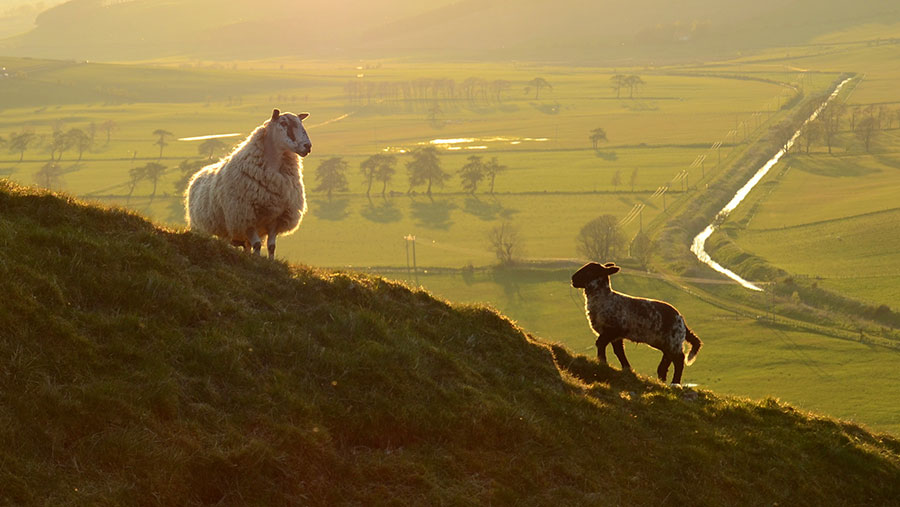Marginal gains key to livestock farm profitability
 © Mr Doomits/Adobe Stock
© Mr Doomits/Adobe Stock Scotland’s top-performing livestock farm businesses are most commonly those that are consistently making incremental improvements.
This is according to the Cattle and Sheep Enterprise Profitability report covering the 2020 calf and lamb crop, released on 7 December by Quality Meat Scotland (QMS).
The report shows producers who are achieving small gains across their businesses in areas such as technical performance and reduced emissions are consistently placed in the top third of performers.
See also: How an upland farm is adapting to survive without subsidies
The results come from more than 250 farming enterprises across Scotland and take into consideration factors such as labour costs and imputed rents. The calculations omit agricultural support payments, except for payments directly linked to production.
The data also show businesses with the best financial returns and best technical efficiency also often have the lowest greenhouse gas emissions for each unit of output.
QMS chief economist Stuart Ashworth said the report showed the rewards that come from making stock more efficient.
“Good calving and lambing ratios, working hard to minimise your mortality in breeding and trading stock, working hard to understand where you sell those animals to good effect and choosing good genetics all aid in achieving improved results,” said Mr Ashworth.
“The 2020 calf and lamb crop will be best remembered for the challenges created by the Covid-19 pandemic and Brexit, which disrupted markets in their initial phases, but also for high farmgate prices for cattle and sheep that contributed to a general improvement in margins.
“Nevertheless, achieving a margin from the marketplace that rewards family labour and provides a return on the capital invested in livestock enterprises remains elusive and there is still a significant variation in levels of financial and technical performance within the industry.”
Sheep
Sheep did marginally better overall than cattle in 2020, due to high prices.
Less-favoured area hill sheep enterprises achieved a gross margin of £26 a ewe, up £4 a head on the year. More than one-quarter (27%) of these flocks achieved a positive net margin, compared with 15% the previous year.
Among upland flocks, 89% of enterprises surveyed achieved a positive net margin for their 2020 lamb crop, up from 55% last year.
Lowland flocks saw a notable increase, with 93% achieving a positive net margin for the 2020 lamb crop, up from 61% in 2019.
Store lamb finishers achieved a positive net margin at 93%, with average net margins increasing by more than £4 a lamb to £14 a lamb.
Cattle
The percentage of suckler herds achieving a positive net margin increased from 36% in 2019 to 45% in 2020, driven by higher prices.
Store finisher margins also increased, with 63% of businesses achieving a positive net margin in 2020, up from 36% the previous year.
Cereals-based finishers had an average net margin of £44 a head – the highest since 2017 – due to high market prices.
Future staffing
Alan Clarke, QMS chief executive, highlighted the major shortage of staff across the whole sector, which was identified as one of the key effects of Brexit.
He said QMS would start to look at innovation that can make a key difference to the industry, through the use of artificial intelligence and more mechanisation for low-level tasks, because of the concern that farming will not have enough access to labour in future.
